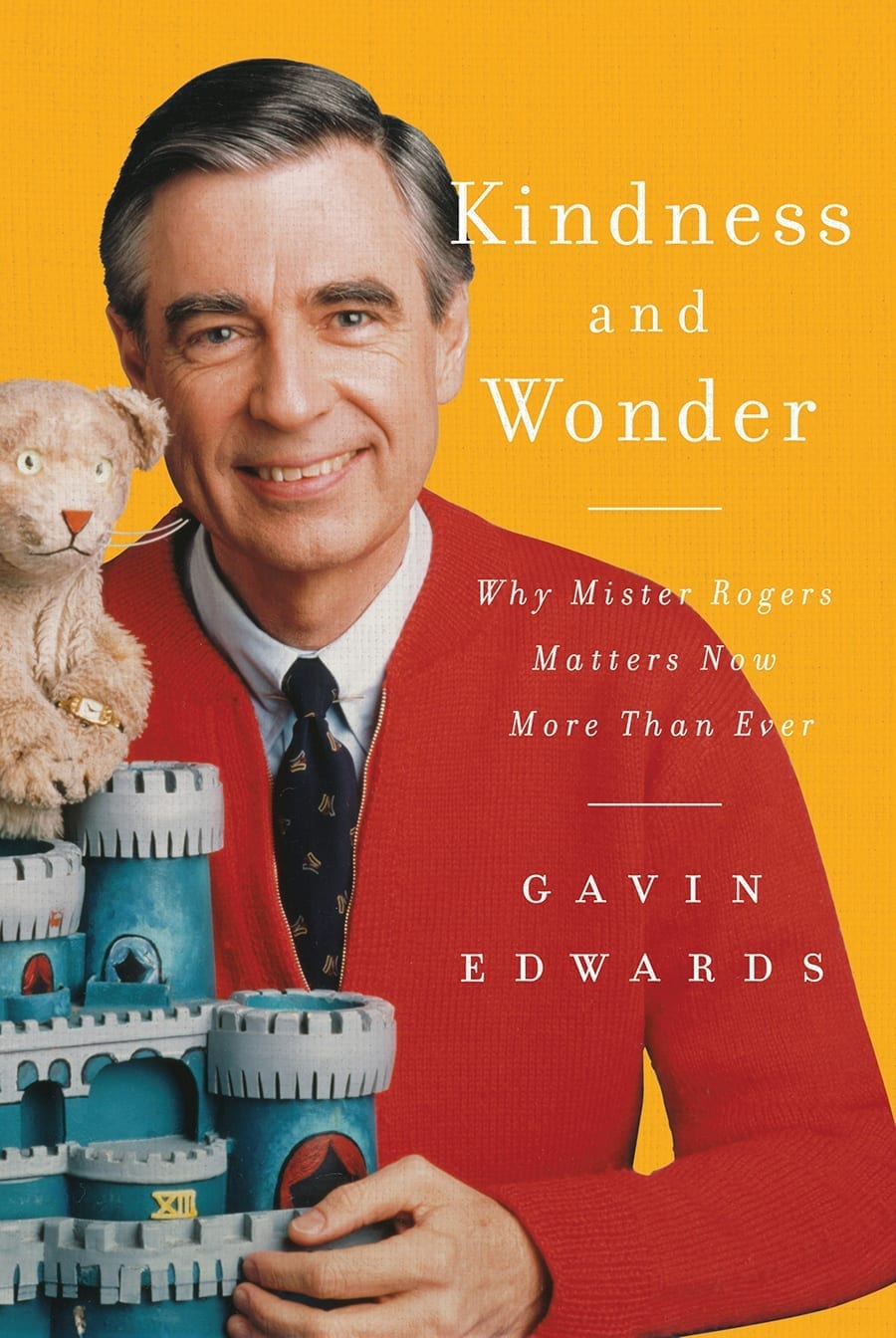Beyond the Rules
August 29, 2019

Pop-culture author Gavin Edwards blends exhaustive curiosity, dogged research and quirky analysis into compelling behind-the-scenes storytelling.
by Michael J. Solender | Photographs by Peter Taylor
Gavin Edwards hands me a skinny CD jewel case, on its cover a block paragraph listing 40 song titles, their artists and run times under the heading “Brief Blunt Blows.”
Most of the tunes clock in around 90 seconds. “I wanted to see how many singles I could cram onto a CD,” Edwards says. “We Got the Beat,” by The Go-Go’s, the all-female ’80s superstar rock band, is the longest selection at 2 minutes, 30 seconds. It’s buried about halfway into Edwards’ monster set of adrenaline-amped, cross-genre programming that features songs by artists both obscure (Tomoyasu Hotei) and iconic (Bob Dylan). The songs on this strategically curated playlist share not only brevity but also a musical compatibility and rhythmic intensity, pieced together with precision like a shattered prehistoric vase reassembled by a sure-handed archaeologist.
This ability to find relationships among disparate puzzle pieces has helped make Edwards, 50, one of the most successful writers on today’s contemporary music and pop-cultural scene.

His essays, reviews, commentaries and observations have been featured in The New York Times, Rolling Stone (where he is a contributing editor), Details, Spin, GQ and Wired, among others. Edwards has authored 11 books, including the biographies Last Night at the Viper Room: River Phoenix and the Hollywood He Left Behind; The Tao of Bill Murray: Real-Life Stories of Joy, Enlightenment, and Party Crashing; and most recently, The World According to Tom Hanks: The Life, the Obsessions, the Good Deeds of America’s Most Decent Guy.
A literary rule breaker, Edwards uses an unconventional approach in covering his subjects, often engaging with them in offbeat ways. He’s played skee ball with actress Kristen Bell, accompanied actor Mark Wahlberg to a car dealership promotion at a Jackson, Miss., parking lot, and quizzed fabled sportscaster Marv Albert about his status as an unlikely stylistic influencer for rapper Chuck D.

One statute Edwards wholly subscribes to and rarely deviates from, however, is Rule 42, an homage and cultural nod to Alice in Wonderland and a sobriquet he used to name his website.
“Alice in Wonderland is the first real book I remember reading,” says Edwards, who moved with his wife, Jen Sudul Edwards, to Charlotte from Los Angeles in 2015. (She’s now chief curator at The Mint Museum.) “It was weird and funny, and I read it over and over. Rule 42 refers to a scene in the book where Alice is in the courtroom for the trial of the Jack of Hearts. She is big at this point, dwarfing everyone, and the king declares [that] according to rule 42, all persons taller than a mile high must leave the courtroom.”
Alice rebels, declaring that Rule 42 is not a real rule. Like Alice, Edwards doesn’t always feel like abiding by the standard “rules” or conventional norms.
“[Rule 42] is the secret key to my sense of humor, logic and absurdity.”
Edwards’ latest book, Kindness and Wonder: Why Mister Rogers Matters Now More Than Ever, will be released in late October. The book celebrating the beloved PBS children’s show producer and star is strategically timed to come out just prior to the Mister Rogers feature film, A Beautiful Day in the Neighborhood, which stars Edwards’ recent bio-subject, Tom Hanks.

“I like to think about subjects in the context of what I call the ‘Big American Story,’” says Edwards, who might spend a year working on a biography. “I [figuratively] draw a Venn diagram of people I care about and those [I think] readers care about — that’s the sweet spot.”
Edwards has been hitting the sweet spot for decades, the seeds of his writing career sprouting as a rock music critic while he was an undergraduate English major at Yale University.
“I began as a computer science major,” Edwards says. “It was a sliding-doors moment in my life. I might have stuck with it if I had a more interesting professor but ended up switching majors and started writing reviews for Yale’s rock ‘n’ roll magazine Nadine. I felt by my junior year my reviews were on a professional level and look back on my experience there as one that (positively) colored my approach.”
The campus publication was co-founded by Joe Levy, who went on to become editor at Billboard magazine and spawned the career of many rock and culture writers including Edwards’ longtime friend and colleague, Rob Sheffield.
“Gavin is gifted at getting people’s stories,” says Sheffield, a music journalist and columnist for Rolling Stone. “What made his name as a writer was doing stories in the ’90s on rock stars that were just too far out for most people to relate to. He would embed with eccentric characters like Tori Amos, Kurt Cobain, Rivers Cuomo and Barry White, absorb their world view, listen to their voices, understand and relate back how they saw things.”
Sheffield often engages Edwards as a beta reader for his books, cherishing his insight.
“Gavin reads every sentence of my books,” says Sheffield, who has authored bestsellers Love is a Mix Tape and Dreaming the Beatles. “He is one of the readers in my head when I write, and the person I’m always trying to impress.”
Edwards’ previous success with biographies led him to his current project.
“Fred Rogers was a man who didn’t know he was working toward his mission, but once he found it, it was obviously true,” Edwards says. “Every talent he had grew into the show. He wrote songs, he learned TV production at NBC in the ‘50s and did puppetry. He was the right man with the right talents and brought this all together to create a wonderful gift for children.”
His research led him to a curious observation about Rogers, connecting him to two other prominent Pittsburgh residents of the era, pop-art legend Andy Warhol and famed zombie/horror film director, George Romero.
“The links between these guys are right out there in plain sight,” says Edwards, who devotes an entire chapter of the book to the parallels among the three men. “They were all around the same age, created artistic communities, and went back and forth between Pittsburgh and New York. One of Warhol’s cousins worked on Rogers’ production crew, and Romero actually produced a short film that screened in Mister Rogers’ living room during one of his shows.”
For Edwards and his readers, the story is yet another puzzle piece that, once discovered, fits neatly into place. SP
Kindness and Wonder: Why Mister Rogers Matters Now More Than Ever by Gavin Edwards will be available Oct. 29.





